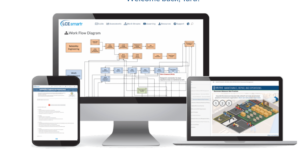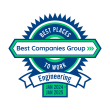By: Blake Foltz | Director of Reliability Solutions, Life Cycle Engineering and David Mierau | Managing Principal, Life Sciences, Life Cycle Engineering
As published in Pharma Manufacturing
Are your digitalization and Industry 4.0 initiatives failing? If so, it may be time to hit the reset button and rebuild your equipment management program.
Artificial Intelligence, big data, machine learning, digital twins — the future of pharma manufacturing will rely on many of these technologies as a way to lower costs, drive productivity and combat labor shortages.
As a result, many manufacturers are spending huge amounts of money on complex industry digitalization and Industry 4.0 initiatives, without first asking the question: is our organization ready? We know from experience that often the best solutions are the most simple ones. Lasting results can only come by executing the basics of reliability and maintenance, over and over again until it’s baked into the core of your organization.
Do you have a solid foundation in place to support new digitalization initiatives? Do your people have the knowledge needed to keep things running and keep your business productive? And is your leadership team committed to enforcing these processes, day in and day out?
If you’ve answered no to any of these questions it may be time to look at rebuilding your equipment management program. In the short term, you’re probably getting by, primarily focused on PM compliance. A few equipment breakdowns here and there may not immediately affect your business, but in the long run, the impacts can be significant — lost productivity on the production line, financial challenges, retention issues, and constantly operating in a reactive, chaotic state. Hanging on by a thread is a place nobody wants to be.
Rebuild your foundation
“A disaster is brewing and we need it fixed right away.” Sound familiar? It’s a call we get from companies more often than you’d think. Further investigation often finds that their processes around equipment reliability are either non-existent or way too complicated. Either way, their equipment is failing and it’s starting to affect the business, causing shutdowns, under-utilized physical assets and product losses.
No one wants to get to this stage — but in the hustle and bustle of maintaining operations, passing quality audits and annual compliancee, preventative maintenance and other equipment reliability programs can start to get neglected and run on the edge. Many plants, even in pharma where regulations and quality control are tight, operate in a run-to-failure mode. Without proper monitoring, early signs of failures can go unnoticed.
This first step involves hitting the reset button and getting back to basics. This is where a solid foundation is built and it’s crucial if you aspire to digitalize your plant. It’s not the most exciting undertaking and there are no shortcuts. Collecting high quality equipment data and the information that matters is the first step to rebuilding your reliability program. It’s about getting into the weeds on technical equipment issues that often get overlooked in quick investigations and even audits.
You’ll need people to walk around and take pictures of assets, gather information on equipment such as make, model and age of machines, and then verify to ensure everything is correct. It’s a temporary heavy lift and you might benefit from outsourcing this work so your existing workforce can continue with their ‘day jobs’ as you take stock of the current situation.
It’s also a good place to start thinking about how bringing in a third party can help develop new processes and get your people on board with change, since they’re not emotionally invested in “how it’s always been done” or defending existing processes.
Streamline and simplify your processes and procedures
We recently completed an assessment of a pharma customer’s plant and found their processes were excessively complicated. At some point in their equipment management journey, they went over the top — everything became so complex that no one really understood what was going on.
For example: there were dozens of equipment failure codes in their enterprise asset management system, so no one was using them because it took too long to read through the list and select an appropriate one. For those that were following the complex daily processes each day, the result was essentially over-maintenance, resulting in high operating costs and wasted time. What does this tell us? Sometimes the answer isn’t always to do more — sometimes you need to simplify and do less. Your team isn’t going to memorize 100 failure modes, but they might remember 10.
So why does a customer call us for help? They could be operating in a state of reactivity and team members have reached their limits. Maybe unplanned downtime has started to affect their finances. There could be a new leadership team. Whatever the reason may be – getting to a place where there are well-documented processes detailing how equipment work is identified, planned, scheduled and executed, along with the preventative maintenance programs to support equipment are really the building blocks of a good program foundation.
Once your foundation is concrete, you can start communicating your processes around essential reliability and maintenance goals and their key performance indicators. The intent is to get all of your team members feeling well-informed and motivated towards the same goals. They understand why these programs are important to the company and they know what to prioritize.
Upskilling your workers
Technology is reducing the need for manual labor. As a result there is a huge demand for upskilling in the pharma manufacturing industry, where competency and compliance are especially critical. This provides opportunities for employees to be more productive and strategic in their roles — improving their quality of work and becoming more efficient in the decision-making process. Companies will need to develop new skills at both an individual and organizational level — which means recruiting and retaining a digitally acquainted workforce.
Organizational changes and new program initiatives like maintenance and reliability improvement can also shift roles in terms of upskilling and reskilling needs. When it comes to delivering any new initiative, it is essential that roles are established, documented, and followed — each individual completely clear on what is being asked of them and being held accountable for their work. For example, you may have a maintenance planner/scheduler position that, in addition to gaining digital acumen by using a new system, can and should begin to use the information in reports to analyze data and identify continuous improvement opportunities.
As you invest in your team and develop their skill sets to match new processes and initiatives, supervisors can start to shift from reactionary minute-to-minute work to problem solving and proactive loss elimination. Execs start to see their workers as assets and all of a sudden, you have a culture of collaboration — one where employees feel like they can speak their mind, ask questions, give ideas, and work together to support new equipment program initiatives that will benefit the organization.
Adhere to the program and sustainability and profitability will follow
We have a client that was a top tier performer a decade ago. They were operating a world-class pharma manufacturing plant and even won awards for their great reliability program. But over the last several years their program completely deteriorated. Why? It was partly the result of a leadership team that no longer prioritized equipment performance. They started questioning why money was being spent on equipment, cutting costs and people — which degraded things even further.
Informing an organization it’s time to hit the reset button, completely retrain their team and get back to where they were years ago is not always well-received. It involves a leadership team that is open to change and focused on the same results — operations, maintenance and the entire shop floor all working towards one goal. Reliability in pharma manufacturing is critical to meet the production demands of today.
But change happens in every plant, people come and go, leadership moves on. The solution to mitigating the effects of change involves baking your processes around equipment reliability into the core of your organization and into your standard operating procedures. When you align maintenance and reliability KPIs to business objectives, the value of the program becomes inherent. It helps ensure your work isn’t on the chopping block when your organization is experiencing pressure to cut expenses.
But without effective leadership as a driving force at the outset, your equipment program has little hope of succeeding, resulting in waste of considerable efforts, costs and resources. Building and maintaining a strong foundation where your business KPIs are directly linked to your maintenance and reliability program is crucial.
Getting your plant to run better isn’t easy, but it’s possible
In an ideal world, you’re maximizing sustainable production of high quality and safe medicines while working within needed financial targets. You’d be effectively leveraging the data from your machines and maintenance data as a way to drive insights and decision-making. But in reality, there are hundreds of factors that prevent this from happening every day. Think about the first foundation steps you can take now to improve your productivity and profitability as an organization.
With so many exciting technological advancements and daily emergencies in manufacturing, it can be hard to stay focused on what matters most to your business. Most companies have realized the need for digitalization — increased connectivity, higher productivity and better data are all useful ways to respond to manufacturing challenges as they emerge.
But without the right processes around equipment reliability, these are difficult goals to achieve. Sometimes getting back to the basics can have the biggest impact and benefits, especially when paired with implementing emerging technologies.

















